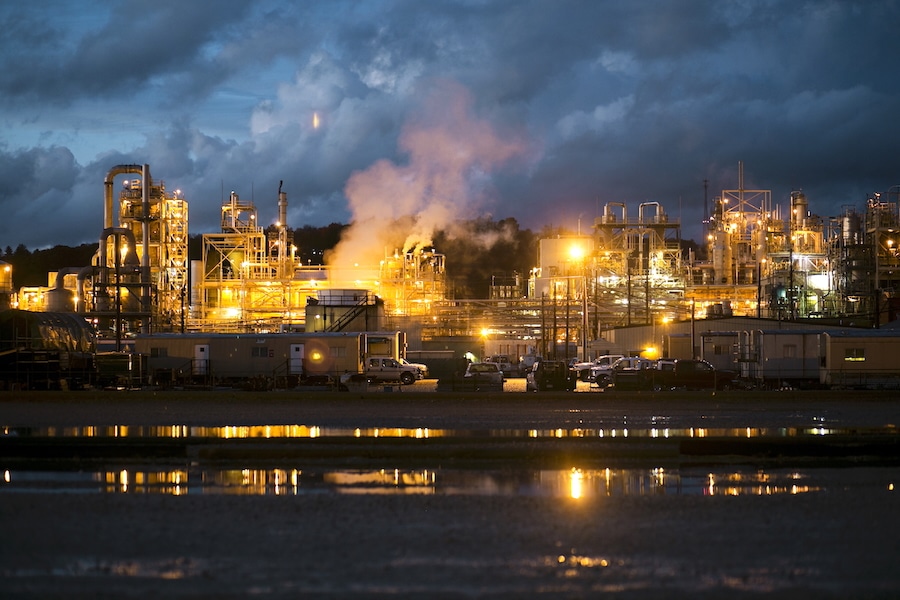This post was originally published on Eco Watch
A Chemours chemical plant in West Virginia is polluting nearby waters with toxic PFAS “forever chemicals,” according to a new lawsuit brought by the West Virginia Rivers Coalition.
The complaint is the most recent in a fight that has been ongoing since 2001 over pollution from the Washington Works plant, reported The Guardian.
The PFAS-contaminated waste is polluting the Ohio River in the town of Parkersburg, home to approximately 50,000 Appalachian residents. The federal complaint claims that waste produced by the factory contains PFAS at levels much higher than allowed by a 2023 discharge permit.
West Virginia Rivers Coalition is seeking enforcement of the agreement from 2023, as well as $66,000 a day in civil penalties for each violation, plus court costs, West Virginia Public Broadcasting reported.
The Chemours plant was the subject of the 2019 film Dark Waters, which told the story of illnesses suffered by Parkersburg residents due to the PFAS pollution, as well as the lawsuit brought against Chemours, formerly a subsidiary of DuPont, reported The Guardian.
A study that arose from the case exposed the health risks of forever chemicals and cost DuPont roughly $700 million.
Local advocates say the recent lawsuit is part of additional legal actions against the plant that have been brought to fill a void left by ineffective regulatory action.
“We have put up with this for 24 years, and [Chemours] is still polluting, they’re still putting this stuff in the water,” said Parkersburg resident Joe Kiger, one of the original plaintiffs, as The Guardian reported.
Among the contaminants listed in the lawsuit are PFAS, PFOA and GenX, all highly toxic chemical compounds that have been found to cause health problems.
The United States Environmental Protection Agency (EPA) has ordered the chemical plant to take steps to correct its actions, but the lawsuit states that it has not. The complaint alleges residents are prevented from enjoying the river for recreation due to the ongoing pollution.
Chemours said in a statement that the “concerns are being addressed” and that it was working with regulators “to navigate both the consent order and the permit renewal process.”
Residents who spoke with The Guardian said most were not aware of continuing hazards from the PFAS pollution.
“They do what they can to make money,” said West Virginia attorney Harry Deitzler, who helped lead previous lawsuits. “The officers in the corporation sometimes don’t care about what’s right and wrong – they need to make money for shareholders and the lawsuits make everyone play by the same rules.”
A large local employer, Chemours invests heavily in charitable giving, and Kiger said many people support the company despite the pollution.
“That’s the kind of stuff you’re up against,” Kiger said. “It could be snowing out and Chemours would tell everyone it’s 80F [27C] and sunny, and everyone will grab their tan lotion.”
A class action lawsuit in 2004 resulted in approximately $70 million for local residents, but the suit failed to prove that PFAS pollution from DuPont was the cause of widespread health problems — including cancer, high cholesterol and kidney disease — in the region.
Rather than dividing the settlement among tens of thousands of the area’s residents, the money was put toward developing the epidemiological study to verify that the local health issues had been caused by pollution from the factory.
The study of roughly 70,000 people in 2012 showed PFOA was the likely cause of the health problems, and later studies demonstrated links between the chemical and other serious health issues affecting local residents.
In 2017 DuPont and Chemours settled roughly 3,500 injury lawsuits for $671 million, and have since paid for the installation of water filtration systems in the region. Chemours also settled an Ohio state suit in 2023 for $110 million over pollution produced primarily by the Washington Works plant.
Rob Bilott, original leader of the class-action suit, said that at times litigation has been the sole way to see meaningful change, since state regulatory agencies, including the EPA, have been periodically staffed with former managers of DuPont or industry allies.
“It’s infuriating,” Bilott said, as reported by The Guardian. “It took decades of making DuPont documents and internal data public, and getting the story out through movies, news articles, books and public engagement, and that’s what finally pushed the needle here. This is the impact of citizens forcing it through decades of litigation.”
The current complaint is a Clean Water Act citizen’s lawsuit, which gives people the power to request the enforcement of federal law in cases where a polluter is in violation and regulators fail to take action.
The EPA has acknowledged the violation by Chemours, but has “taken no further enforcement action regarding Chemours’s violations as of the date of this complaint,” the lawsuit said.
The post Chemours Chemical Plant Still Polluting West Virginia Water With Toxic PFAS After Almost 25 Years, Lawsuit Claims appeared first on EcoWatch.





0 Comments